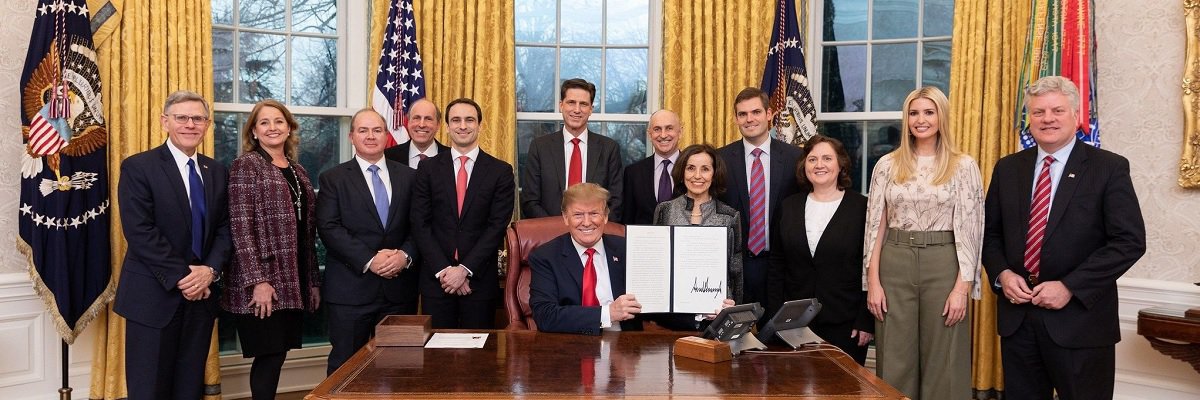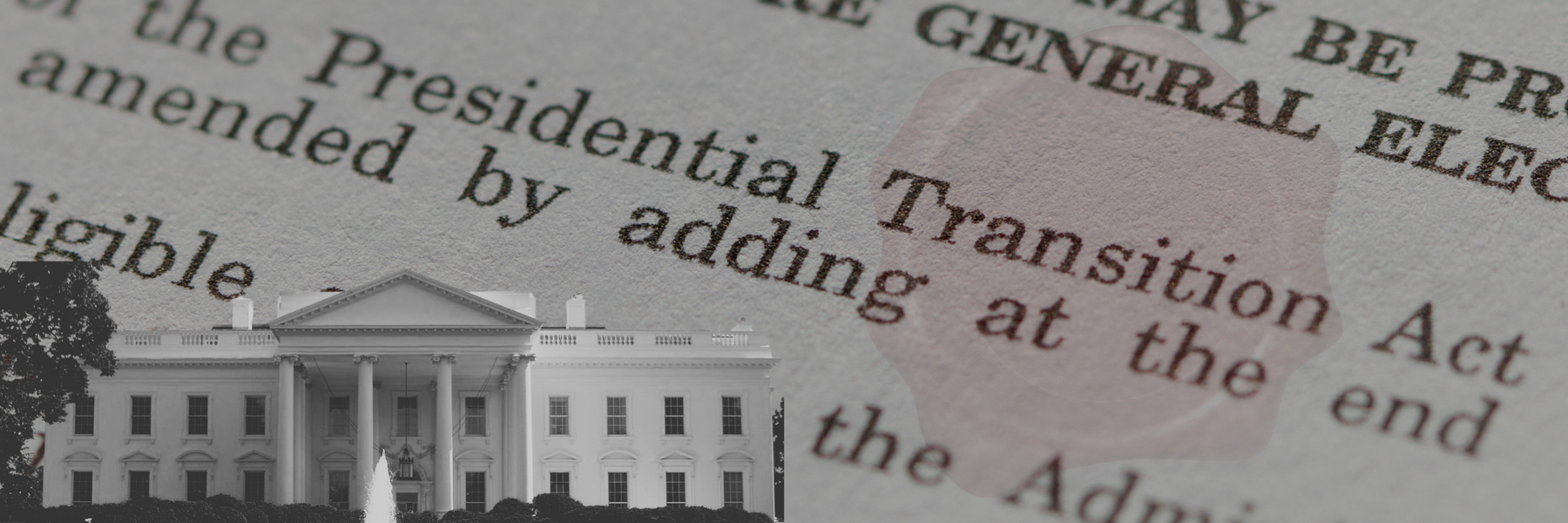The United States is committing to a broad program of artificial intelligence to maintain the country’s industry lead and modernize the military, the White House announced in an Executive Order issued by President Donald Trump on February 11th. The effort, dubbed the American AI Initiative, emphasizes the potential economic and national security value of AI and contains a collection of principles for the prioritization of AI research, echoing many of the takeaways from the May 2018 White House Summit on Artificial Intelligence for American Industry. The directive is the first U.S. declaration of a government-wide strategy for AI advancement. It could require federal agencies to confront problems with data collection and access to information, but it contains few specifics about how it will be funded or how it will address ethical concerns. The order also makes little mention of public input.
Five principles are central to the AI Initiative:
-
generating technological breakthroughs through funding and mission support
-
setting technical standards,
-
training people for future AI careers,
-
fostering public trust in AI, and
-
promotion of American AI adoption in international markets.
After Canada proposed the Pan-Canadian AI Strategy as part of its federal budget in March 2017, 18 other nations have announced top-level strategies for AI development, including China’s New Generation of Artificial Intelligence Development Plan in July 2017 and billion dollar-plus commitments in France and South Korea.
The U.S. effort will be coordinated through the National Science and Technology Council Select Committee on Artificial Intelligence, created in May. It calls for a plan to protect U.S. advantages in AI “against strategic competitors and adversarial nations.”
The executive order comes after several federal agencies began examining the role of AI in the performance of their responsibilities. As part of its Hearings on Competition and Consumer Protection in the 21st Century, the Federal Trade Commission in November spent a weekend discussing its regulatory responsibilities for AI. Multiple agencies, such as the US Department of Agriculture and the National Institute of Justice, have been issuing grants and participating in working groups to find ways to supporti AI research.
The Department of Defense released its own AI strategy on February 12th, a day after Trump issued his executive order. A DoD statement said it is intended to be “in close alignment with the principles and strategic objectives” of the president’s order. The Defense Department for more than a year has been lobbying for a greater national focus on AI, highlighting AI’s importance in the 2018 National Defense Strategy. In June, DoD announced formation of a Joint Artificial Intelligence Center to be headed by Lt. Gen. Jack Shanahan, who had previously led the Pentagon’s Project Maven AI project, a controversial project that uses AI to assess images the military collects.. The JAIC will be an important coordinating body in the DoD strategy, and its implementation also will be directed by Chief Architect Brendan McCord, head of the Defense Innovation Unit Experimental (DIUx), and Stoney Trent, former chief of experimentation at US Cyber Command’s Cyber Immersion Lab.
“The DoD offers a vision of AI that is consistent with the United States’ values – including human rights. Our focus is to invest in AI systems that are ethical, resilient, robust, reliable, and secure. We will also seek to use AI to reduce unintentional harm and collateral damage via increased situational awareness and enhanced decision support,” DoD spokesperson Elissa Smith told MuckRock in an email.
“As we improve the technology and our use of it, the DoD will continue to share our aims, ethical guidelines, and safety procedures to encourage responsible AI development and use by other nations,” Smith’s email said.
## Know of an algorithmic development near you? Click here to let us know.
“The Defense Department expects to have completed some AI projects later this year that will allow the agency to troubleshoot equipment failure before it actually breaks down. The projects will be specifically focused on methods of predictive maintenance, as well as applications in humanitarian assistance and efforts to reduce the time to detect and respond to cyber-based threats, which the department refers to as cyber sensemaking. From there, the department expects to apply its findings to expand use of AI across the military’s branches, Smith said in the email.
“Next, is to develop and encourage a DoD culture that views AI as foundational to the DoD of the future,” Smith’s email said. “JAIC must show the value AI can add to the DoD.... [and] will educate the Department on how AI can help with their problems, processes and practices.”
The finer points of how the federal government will implement the executive order still need to be determined. An as-yet unstated list of “implementing agencies,” those that already contribute to AI research, development, and grant funding, are expected to make AI advancement even more of a priority under the terms of the executive order. All federal agencies are directed to review their data for “opportunities to increase access and use by the greater non-Federal AI research community.”
The order repeatedly directs the federal government to evaluate data systems and the need to update access to and ease of use of federal data, important for developing AI models.
The Office of Management and Budget is required, under the executive order, to review by May 12th any existing barriers to obtaining and using federal data for AI and to open a public comment period about other ways to advance or improve data collection. That is the only mention of direct public feedback in the executive order. The Select Committee on AI, part of the NSTC and formed by the Trump Administration in May, also is expected to offer education and workforce recommendations to NSTC’s Committee on STEM Education, a subcommittee whose members include Director of the National Science Foundation France Cordova and representation from NASA, the Department of Agriculture, Department of Energy, among others.
Advocates for digital civil liberties are skeptical of the order and the public’s ability to influence the direction of AI adoption. The AI Universal Guidelines, a collection of principles drafted in October 2018 by international advocates including the the Electronic Privacy Information Center, include the “Right to Transparency” as foremost among the elements that institutions should be building into their AI systems.
“As they’re telling agencies to prioritize AI research and development, public comment periods on how that should go forward would be welcome,” Caitriona Fitzgerald, Policy Director at Electronic Privacy Information Center told MuckRock in an interview. “There was a Select Committee on Artificial Intelligence formed last year in the White House and there were no references to accountability, transparency, ethics, fairness. None of those words were in the report of the AI summit the White House held.” Whether the executive order will foster such transparency, for now, is uncertain.
The full executive order is embedded below.

Algorithmic Control by MuckRock Foundation is licensed under a Creative Commons Attribution 4.0 International License.
Based on a work at https://www.muckrock.com/project/algorithmic-control-automated-decisionmaking-in-americas-cities-84/.
Image via the U.S. Mission to the Organization For Economic Cooperation & Development




